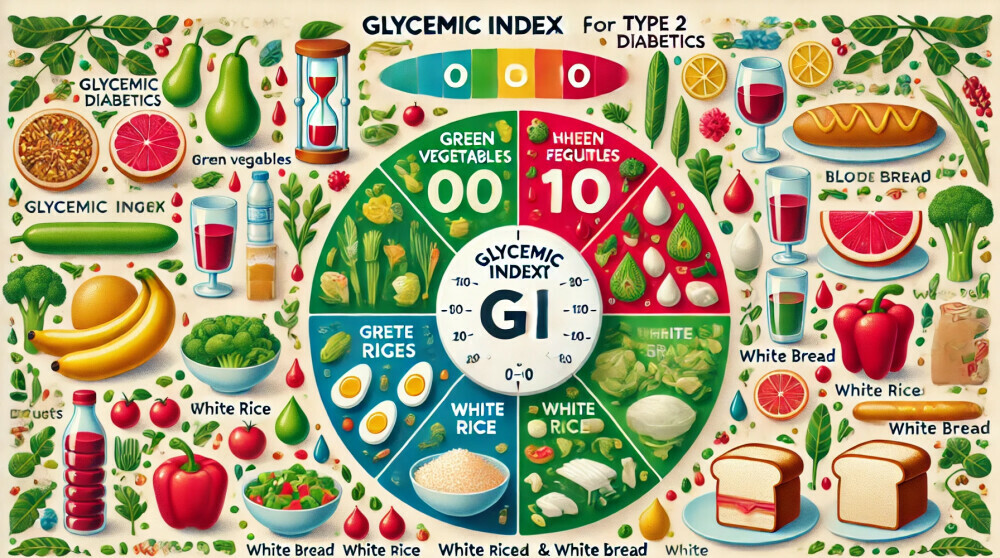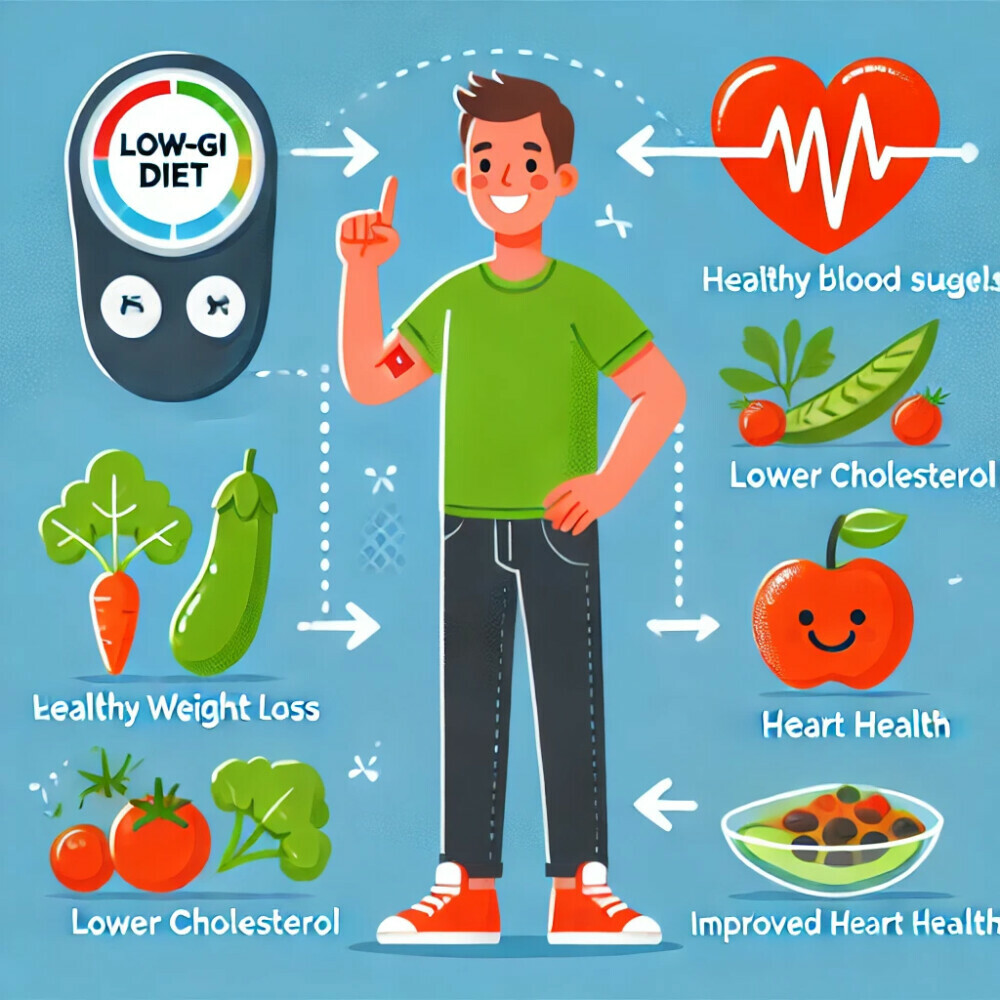
As a type 2 diabetic, I have heard this phrase A LOT! I’m talking about the Glycemic Index (GI). This isn’t just a concept tucked away in nutritionists’ notebooks; it’s a powerful tool for anyone looking to better understand how their body reacts to different foods.
The thing about it is, we have to understand it in order to properly use it.
So, what is the Glycemic Index? Well, it measures how much certain foods raise blood sugar levels after you eat them. Foods are ranked on a scale from 0 to 100, with higher values assigned to foods that cause the most rapid blood sugar spikes. This scale is pivotal in understanding how food can affect energy levels and overall health.
This is a very important scale for diabetics. Let’s look more closely at this.
When it comes to GI ratings, there’s a spectrum. Low GI foods score between 1-55, medium GI foods fall within 56-69, and high GI foods are those that score 70 and above. Green vegetables and most fruits have low GI scores, which means they have a gentler effect on blood sugar. On the other end, white rice and white bread easily skyrocket blood sugar levels and boast high GI scores.
If you are a diabetic, you most likely know this already! And I love rice!
Understanding the Glycemic Index Scale is just the first step. The real journey begins when you start pairing this knowledge with the actual foods on your plate. But don’t worry too much about needing to memorize every food’s score. Instead, I’ll show you how recognizing the patterns of GI ratings can influence not just what you eat, but how you feel.
The Glycemic Index and Your Health: Potential Benefits

Let’s take a closer look at the health benefits associated with the Glycemic Index (GI), especially considering its potential role in a well-rounded diet. By understanding how foods can influence your blood sugar levels, you can make more informed choices that may lead to improved well-being.
One of the most talked-about advantages of adhering to a low-GI diet is weight management. Are low-GI foods the secret ingredient to weight loss? Research suggests that because these foods provide a slower, more gradual release of sugar into the bloodstream, they can help maintain a feeling of fullness for a longer time. This can ultimately prevent overeating and aid in maintaining a healthy weight.
But the benefits extend beyond your waistline. Keeping an eye on the GI of foods may play a part in lowering blood pressure and reducing cholesterol levels. These factors are crucial in heart health, and choosing lower-GI foods might be a simple strategy to support your cardiovascular system.
For individuals managing diabetes or at risk of developing it, GI can be a vital consideration. Selecting foods with a lower GI can help maintain steady blood sugar levels, which is key in diabetes management. Moreover, there’s a growing body of evidence that indicates a low-GI diet could be beneficial in preventing both type 2 diabetes and various forms of heart disease.
These are important things for people with diabetes to consider. Since diabetes attacks so many of our systems, finding a healthful way—following a low GI diet—could prevent more problems down the road!
In summary, focusing on the Glycemic Index of foods has the potential not only to steer you towards a healthier diet but also to provide tangible benefits for long-term health outcomes. That said, it’s important to remember that GI is just one component of a nutrient-rich diet.
Glycemic Index in Practice: Making Informed Dietary Choices

Now you’re going to find out about how to apply what you’ve learned about the Glycemic Index (GI) to make smarter dietary decisions.
While it is important to look at the “score” on the foods we it, it isn’t just about choosing foods with a low GI score; you’ve also got to consider their overall nutritional value. A food’s vitamin, mineral, and fiber content are key components of a healthy diet, and not all low-GI foods are rich in these essential nutrients.
The concept of Glycemic Load (GL) takes the idea of GI one step further.
GL considers both the glycemic index and the portion size, providing you with a more accurate idea of how a particular food will impact your blood sugar. This means that you can always adjust your approach down the line to match your health and dietary needs.
Since I use my AI Buddy for a lot of things, I can also ask Buddy (ChatGPT) to come up with low GI and low GL menus to help me maximize my best choices. Along with the GI and GL, I can also ask Buddy to put in the calorie and carb counts on the menus, as well. It is an easy way to come up with menu plans that will help you meet your goals. My AI Buddy can also come up with a shopping list for the menu plan that is created. Trust me, this is soooo helpful!
Just remember to watch out for factors that can tweak a food’s GI. The way you cook your food, how ripe it is, and the level of processing it has undergone, all change the glycemic index. For example, boiling sweet potatoes has a lower GI impact than baking them, and overripe bananas have a higher GI than those that are just right.
Incorporating low-GI foods in your diet can be a game-changer, especially if you’re balancing blood sugar, looking to increase your feeling of fullness after meals, and support your overall health. Remember to choose something that resonates with your taste preferences and health goals. And as always, it’s important to place these choices within the context of a balanced, varied diet.
A low-GI meal plan should be diverse and personalized. Listen to your body, and consider consulting with a nutritionist to find the best foods that work for you. Choose wisely, eat well, and here’s to your health!
My personal recommendation is to use an AI tool to help you along with this. But, as always, check with your healthcare provider before making big changes to your diet or exercise plans.

